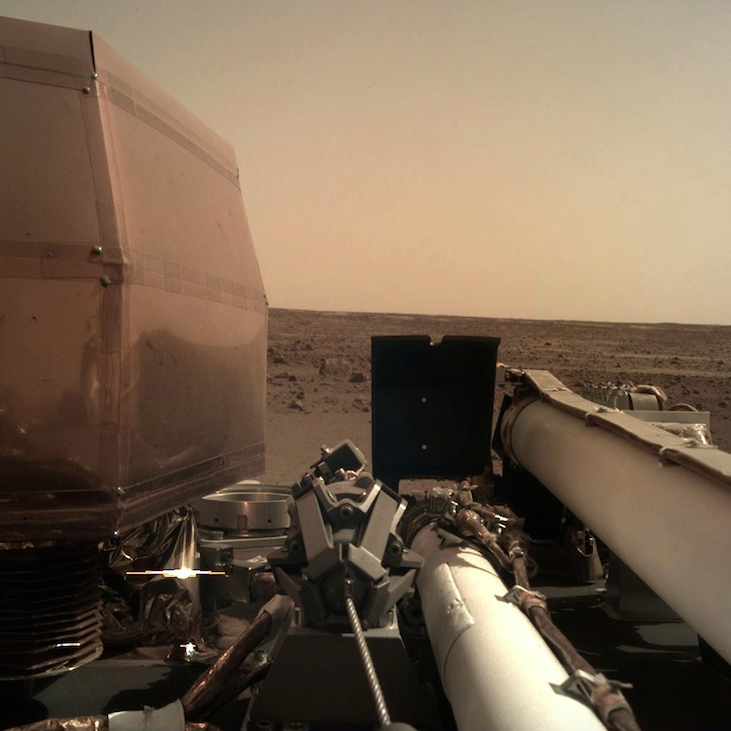The key instrument that will be used to measure Mars tectonic activity is supplied by a European team headed by France's CNES space agency.
InSight (INterior exploration using Seismic Investigations, Geodesy and Heat Transport) — the 12th mission of the NASA Discovery Program — has successfully arrived on the surface of Mars for a two-year mission. Having completed an almost seven-month, 300-million-mile (458-million-km) journey from Earth, the geophysical lander will study the planet’s deep interior and gain new understanding of how rocky planets form.
InSight aims to study Mars’ deep interior structure using a geophysical station deployed from a fixed lander to better understand the mechanisms that shaped the rocky planets in our solar system. Using the SEIS seismometer (Seismic Experiment for Interior Structures), it will measure Mars’ tectonic activity to learn more about its structure, for example the size of its core and the thickness of its mantle.
Meteorite impacts will also be analysed by measuring seismic waves. The Heat Flow and Physical Properties Package (HP3) will gauge the planet’s cooling rate in order to retrace its thermal history. And the RISE instrument (Rotation and Interior Structure Experiment) will acquire precise measurements of the Red Planet’s rotation.
The French space agency, CNES, was in charge of overseeing development of the SEIS instrument in partnership with the Institut de Physique du Globe de Paris (IPGP), SODERN (EADS Group), the Swiss Federal Institute of Technology (ETH), the Max Planck Institute for Solar System Research (MPS), Imperial College London and the Jet Propulsion Laboratory (JPL).

